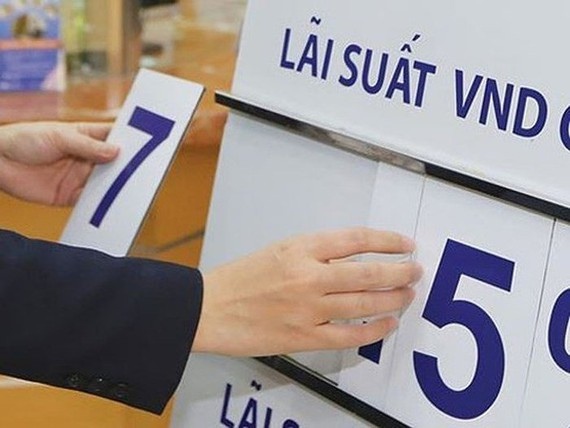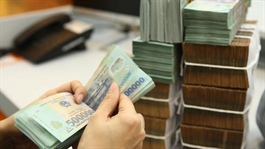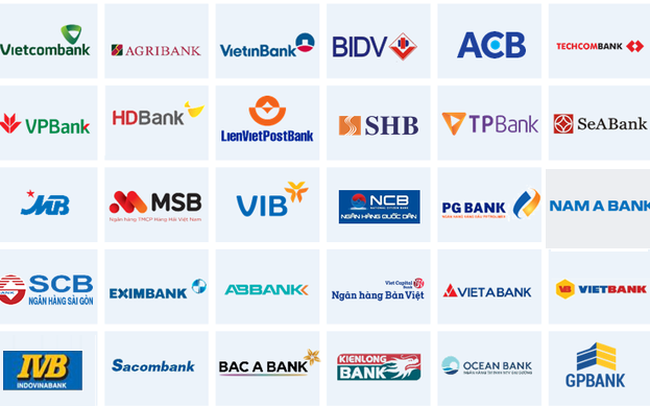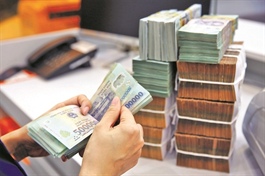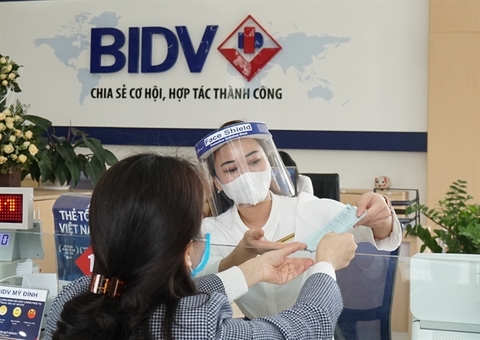Banks in dilemma to reduce interest rates
Banks in dilemma to reduce interest rates
The State Bank of Vietnam has been directed by the Government for many years to reduce lending interest rates. In the current effort towards economic recovery and sustainable development, this will prove quite difficult as markets are currently strung between multiple bottlenecks.
Illustrative photo. |
Current dilemma
The world's leading Central Banks such as the FED, ECB, BOJ, and BoE are preparing for the largest quantitative tightening in history due to increasing global inflation. On 16 March, the US Federal Open Market Committee (FOMC), which is the policy making body of the FED, decided to raise interest rates by 0.25%, and the FED is expected to increase by 0.25% at six of the remaining meetings this year, which means bringing the interest rate to about 1.75% to 2% per year. After this, the FED can raise interest rates three more times until 2023. The rate hike comes again after nearly two years of the FED cutting interest rates to near zero, and implementing a program to buy assets of at least USD 120 bn per month, to stimulate the economy to overcome the recession caused by the lengthy Covid-19 pandemic.
In Vietnam, inflationary pressure is also becoming more and more obvious, when domestic and international supply chains continue to remain disrupted. At the same time, world commodity prices are still on the rise, while Vietnam's economy is heavily dependent on imported raw materials. Recently, record high gasoline prices have added to the concerns of the people. Many factors are now resonating, from the cost of pushing and importing inflation. Mr. Nguyen Xuan Dinh, Deputy Head of the General Policy Department, in the Department of Price Management, under the Ministry of Finance, forecasts that inflation may exceed 4%, or will fluctuate between 3.6% to 4.3%.
Although inflation is expected to increase in Vietnam, the State Bank of Vietnam cannot act as a major Central Bank, because domestic developments are not aligned with the world markets. When countries are tightening quantitatively, the support package for economic recovery and development of VND 350,000 bn will be deployed, and the capital will be disbursed in 2022 and 2023. Along with imported inflation, the disbursement of the above recovery support package will push up domestic aggregate demand which will increase further. Therefore, while the trend is of narrowing and loosening monetary policy, increasing interest rates becomes mainstream to deal with the risk of inflation and the risk of global financial instability. Vietnam requires banks to guarantee credit for the economy to recover, and reduce lending interest rates to support businesses and export enterprises. However, this will put the State Bank of Vietnam in a tight dilemma.
Difficult to reduce rate
Commercial Banks have moved according to the market, when deposit interest rates increased since the beginning of the year. In a number of deposit terms, banks have pushed interest rates up quite high, and the larger the deposit, the more priority is given to interest rates. SCB currently has the highest interest rate in the market at 7.5% per year for savings deposits of VND 500 bn or more, with a term of 13 months. At the same time, the highest online deposit interest rate is 7.35% per year. ACB applies an interest rate of 7.1% per year on a deposit of about VND 100 bn with a term of 13 months. Techcombank pays an interest of 7.1% per year if customers deposit from VND 999 bn or more, with a term of 12 months and a commitment not to pay off early. MSB has the highest savings interest rate of 7% per year.
Banks have to quickly adjust, and are unable to set the increase or input interest rates because capital demand is recovering well. According to data announced by the State Bank of Vietnam, credit growth as of 25 February reached 2.52%. Compared with the increase of 2.74% on 28 January, credit growth in February somewhat narrowed, but that was because February coincided with the Lunar New Year holidays, reducing credit demand.
According to the forecast of BIDV Securities Joint Stock Company (BSC), credit demand in 2022 will continue to be high and may increase by 14%. SSI Securities Joint Stock Company expects credit growth to reach about 14% to 15%. Bao Viet Securities Joint Stock Company forecasts credit growth of up to 15%. The basis of these forecasts is the economic recovery after the pandemic along with a support package of VND 350,000 bn, deployed for the 2022 to 2023 phase, which includes a support credit package with an interest rate of 2%, up to VND 40,000 bn, which will also be the driving force of credit growth this year.
Credit has increased sharply, and banks need money to lend. However, as of 25 February, capital mobilization increased by 1.29% compared to the end of 2021, which means that the capital mobilization speed is only half the lending rate. It also means that this is a repetition of the same scenario as last year. The deep drop in interest rates in the last two years has made people look towards investment channels with higher yields such as stocks or real estate, instead of savings. Demand for capital has increased again, and banks cannot sit and watch idle money flow through other channels like it did last year.
In the interbank market, liquidity stress is also evident. Since the beginning of the year until now, the State Bank of Vietnam has continuously net injected in the open market. The State Treasury is also buying foreign currency, to support market liquidity and reduce interest rates. However, the key interbank interest rate is still above 2% per year. On 15 March, the interbank interest rate for the overnight term was 2.18% per year, for a one-week term it was 2.28% per year, and for a two-week term it was 2.51% per year. At the same time last year, this interest rate was only 0.27% per year, for one-week term it was 0.37% per year, and for a two-week term it was 0.49% per year.
The target of 14% credit growth after a reduction in loan interest rate becomes a difficult problem to tackle. When interest rates in the market increase, there is no room for the State Bank of Vietnam to reduce operating interest rates. The 2% interest rate support credit package is theoretically the basis for businesses to access lower interest rates. However, when the deposit interest rate increases, the loan interest rate will increase accordingly, and the 2% support will only ensure that the loan interest rate that businesses pay in the future will go flat. According to forecasts, this year the on-balance sheet bad debt could reach 2.3% to 2.5%, with current on-balance sheet bad debt ratio showing 1.9%. Hence, banks must keep a good profit margin to have money to make provision for such future risks.


